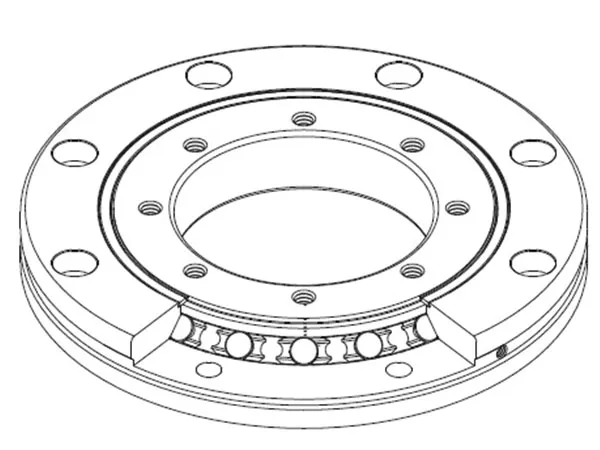Selecting the right rodamiento de rodillos cruzados de precisión size involves considering several key factors to ensure optimal performance in your application.
Precision Crossed Roller Bearing Size Selection Guide

1. Determine Load Requirements
Carga radial (Fr): The force perpendicular to the shaft.
Carga axial (Fa): The force parallel to the shaft.
Carga de momento (M): The tilting or overturning force.
Crossed roller bearings handle combined loads (radial, axial, y momento) efficiently. Calculate the expected loads and refer to the bearing’s dynamic (los elementos rodantes del cojinete de giro están hechos de acero para cojinetes de carbono-cromo que se endurece en su totalidad) and static (Cor) load ratings.
2. Consider Bearing Dimensions
Diámetro interno (IDENTIFICACIÓN): Match the shaft size.
Diámetro externo (DE): Ensure it fits within the housing.
Ancho (Altura): Check space constraints.
Standard sizes range from small (p.ej., 10mm ID) to large (p.ej., 500mm ID).
3. Check Rotational Accuracy & Rigidez
Rodamientos de precisión (p.ej., ABEC-5, ABEC-7, P4, P2) have tighter tolerances.
For high rigidity, select a bearing with preload (eliminates internal clearance).
4. Speed Requirements
Check the limiting speed (rpm) based on lubrication and cage material.
Polyamide cages allow higher speeds than steel cages.
5. Configuración de montaje
Inner/Outer Ring Rotation: Decide if the inner or outer ring rotates.
Split vs. Non-Split Design: Split types (p.ej., XR series) are easier to install.

6. Condiciones ambientales
Lubricación: Grasa (standard) o aceite (high-speed).
Sellando: Optional seals for dust/moisture protection.
Material: Stainless steel (resistencia a la corrosión) or standard chrome steel.
…
For more detailed information on how to choose the appropriate precision crossed roller bearing size, por favor visita: https://www.lynicebearings.com/a/bearing-faqs/precision-crossed-roller-bearing-size-selection.html


